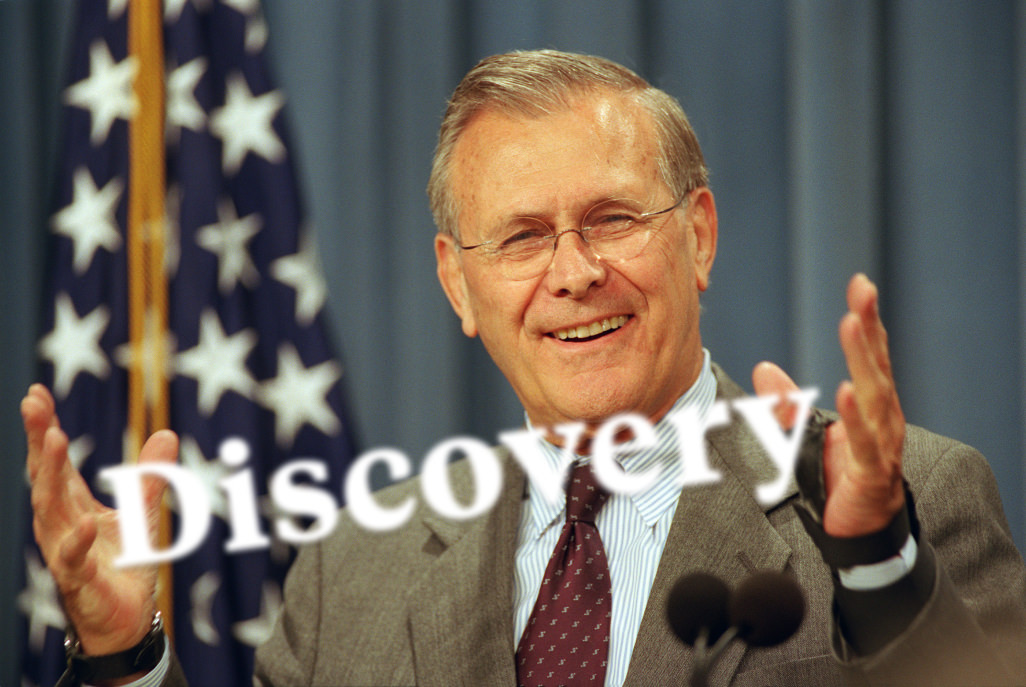The discovery paradox


Meet Sophie. A business leader at a large organisation, Sophie oversees multiple products. She works with both her in-house product and design teams, as well as external partners.
One of the products Sophie oversees needs some external help. Her teams are too busy and she’d prefer an objective view anyways. But this means she has to request more budget, which means a trip to procurement.
Sophie creates a specification doc, but procurement needs more information before releasing funds. What might the project look like? What’s the problem and viable solutions? What are the timelines, expected deliverables and scope? Who might be involved? Why? How much will it cost?
At this point Sophie is writing an in-depth brief. It’s an arduous, exhaustive process that requires her to think deeply about the problem. Having worked with design teams before, Sophie finds herself familiar with some of the potential solutions, like user journey mapping, personas creation or the jobs to be done research technique. She adds them to her brief.
Sophie sends her finished brief to procurement. Procurement green-lights her request and releases the funds she needs. Sophie shortlists various agencies she’s been keen to work with, and gets in touch.
“…there are known knowns; there are things we know we know. We also know there are known unknowns; that is to say we know there are some things we do not know. But there are also unknown unknowns—the ones we don’t know we don’t know.”
— Donald Rumsfeld, 2002

Meet Emma. Emma works at one of the agencies Sophie shortlisted. Emma receives Sophie’s email and qualifies Sophie’s company. She reads the brief and arranges a call to understand more.
During the clarification call, Emma meets Sophie and some of her team. Pertinent questions are asked and answered. The project’s goals are understood, as well as the team shape, the reason for the work and other fundamental aspects. Yet one thing becomes clear to all parties.
'Erm, we need a what now?'
The brief may have started simply, but the problem, as it turns out, is a wicked one. There are aspects of cultural change. The wider organisation and senior stakeholders have differing views on the problem. There’s disparate internal user research to pore over and organise, and still more primary research to be conducted. Parts of the puzzle are there, but a vast amount of questions still need answering.
At this stage - when this impasse is reached - there’s only one approach that will mitigate the risk for both Sophie and Emma. It’s the approach that Emma knows is best for her agency, and equally the approach Sophie needs (but doesn’t know she needs) to truly address the problems with her product.
Emma proposes a 6-week discovery phase, to dig deeper into what Sophie’s already shared.
Yet for Sophie it’s a frustration. In her opinion she’s already answered most of the unknowns. She’s uncovered many of the missing puzzle pieces. Why should she pay an external partner for 6 weeks to cover the same ground she already has? She’s told Emma everything there is to know. The brief had all the info and details. The names of the stakeholders were all there, plus a clearly-outlined problem statement. What's the problem?
Folks, this is the discovery paradox.
Emma, on the contrary, knows that a discovery phase is precisely what’s needed. She can’t send a project team into Sophie’s organisation without uncovering and understanding the true problem. Yet to understand the true problem, her team needs to get into the weeds alongside Sophie's team and organisation. Together they need to understand more. To query, question and interrogate the issue from multiple angles and arrive at the true problem statement as a unified team.
Ultimately Emma knows there was never a clear brief. The problem statement is incomplete. The brief is fragmented. The suggested approach is off the mark. Although Sophie’s effort was absolutely commendable, she could never have known the amount of uncertainty at her organisation, or the lack of clarity of the problem she’s actually facing. Why? Because she's in it. Over the years, Sophie has become indoctrinated into the ways of working at her organisation, good or bad.
Ironically it's at this point that an objective, critically-thinking external partner is needed.
Trust the process
The designer’s superpower is making sense of chaos. Designers are adept at asking questions, then taking small, measured next steps to move ‘from here to better’.
Agency-based designers in particular basically live in that uncertainty limbo. They’re accustomed to becoming subject matter experts overnight, gleaning as much information as possible in as little time as necessary. With experience they’re able to cut through organisational debt and debris and — like an archeologist uncovering a dinosaur skeleton piece by piece — uncover the deeper problem at hand.
The discovery phase is such an integral engagement because it allows the problem to be understood before it is solved. Any good agency will demand to understand the problem before rushing into a solution.
This is exactly why at Clearleft we often use the Double Diamond as a representation for how we work. We start by designing the right thing. We use research, analysis and design thinking methodologies do determine what the problem actually is.
Once defined we start to design the thing right. Through design craft, ideation and iteration we reveal the product or service that addresses the problem.
In Sophie’s situation she did all the right things. She understood the problem space as she understood it. But she didn’t account for the ‘unknown unknowns’ that need answering before any viable agency can truly deliver on a specific requirement.
What is a discovery phase?
The discovery phase exists as a risk mitigation strategy; a tranche of work designed to expose and unearth potential hazards, shortcomings or opportunities. All the things that otherwise might not have been obvious to those closest to it.
While the discovery process might feel counter-intuitive or a prolonged way of answering already-answered questions, it’s in fact a critical and important phase of work that benefits both vendor and client.
As the old adage goes
A problem shared is a problem solved.
Through collaboration and discussion the real problem is laid bare, making it easier to tackle in the long term. Agencies have vast toolkits from which to draw upon, full of methodologies, approaches and actions designed to prompt discussion and answer questions. They’ve conducted discovery phases countless times before. They thrive in that strange, uncomfortable space of embracing the unknown.
The next time you find yourself in Sophie’s situation, remember to trust the process. Outline your problem, frame the issue, but take comfort knowing you’re only halfway there. Have an open mind. Look for partners who want to uncover those deeper questions and answers with you, not purporting to know all the answers already.
Embrace the Rumsfeldian ‘unknown unknowns’ and you’ll arrive at a great solution faster than you think.
September 20th, 2021